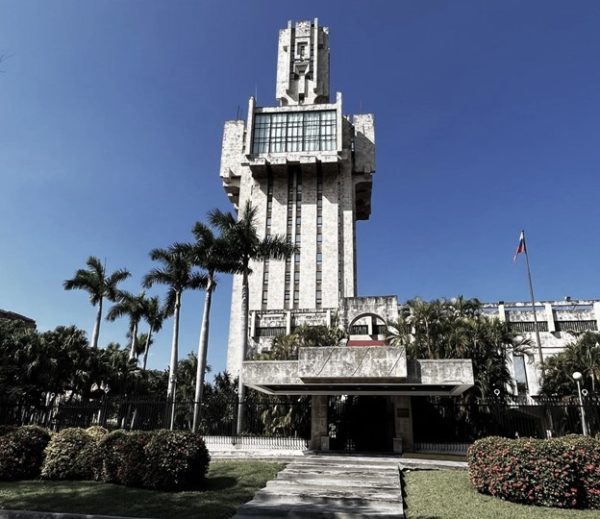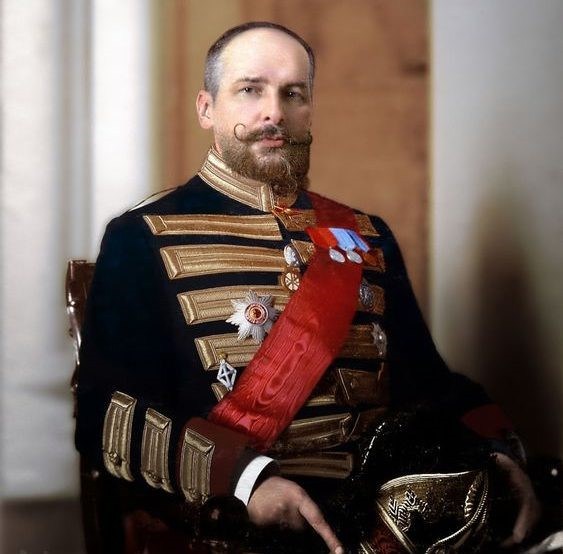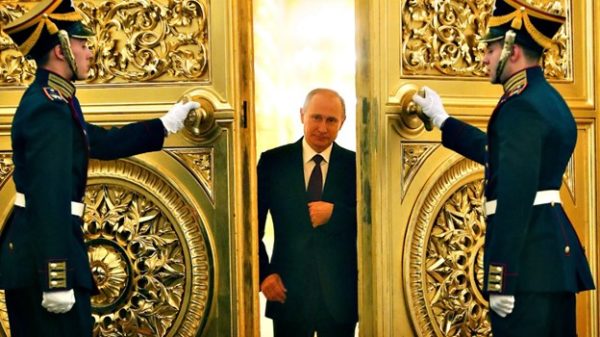Russian Aid to a Russian Solution for Cuba: Same Old Story?

By Mario Valdes Navia (Joven Cuba)
HAVANA TIMES – Even though I thought I was ready for anything at 62 years old – which I turn today -, I must admit that I never expected to see the Cuban Communist Party (PCC) First Secretary meet with a delegation of foreign business owners and decide to found a center to prepare: “economic change in Cuba based on the development of private enterprise.”
The Cuban part in the project will include representatives from the Cuban Central Bank and key ministries, and I’m sure [the military business conglomerate] GAESA will also be involved even if the source didn’t mention them. While the Russian side will include experts from the Center for Strategic Research, the Institute of Economic Forecasting of the Russian Academy of Sciences and the influential Institute for the Economy of Growth, Stolypin P.A. think tank.
What have these experts in dismantling Socialist state-controlled economies and creating authoritarian capitalist economies in the periphery, come to Cuba for? When the Cuban Government/Party/State has been resistant to change the outdated and criticized model of State socialism and to apply reforms set forward by Cuban economists, where has this sudden decision to privatize in true Russian style come from? Will it be a deja vu of Cuba’s time with a “close and eternal friendship with the USSR,” which is now represented by Putin’s imperial Russia?

When I started working, in the early 1980s, Soviet advisors stood out for the respect they were given in every important economic and social body in Cuba. Even though they didn’t openly lead them, their advice had to be taken into account and put into practice by cadres in these institutions, who had to answer to their bosses and be welcoming and accommodating of these big brother representatives.
That was until Gorbachev said that it hadn’t ever been true Socialism and that a restructuring (perestroika) and a greater transparency of information (glasnost) were needed. When Soviet advisors began to repeat perestroika mantras and flood us with critical reports, their days in Cuba were numbered.
The Rectification of Errors and Negative Tendencies Process (1985-1990) in Cuba tried to armor-plate the state-controlled system by appealing to the voluntary rhetoric used at the beginning of the Revolution. The appeal for awareness and voluntary work, as well as the rejection of trade relations and budding private enterprise, resulted in growth paralysis and weakening the country almost on the eve of the terrible crisis known as the Special Period, which would begin in 1991.
Cuban economists have been proposing endogenous reform since 1993 at least, to try and get the country back on the track of growth and progress with a mixed economy, where different economic groups would compete and complement each other with the market and indicative planning. Their opinions have never been taken seriously as a comprehensive project by decision-makers, but have rather been taken in dribs and drabs, and they decide the pace and when they will be implemented.
Ever since the crisis of the ‘90s began, sessions have been held to get Cuban citizens to offer their own opinions about what needs to be done to “Save the Homeland, Revolution and Socialism.” An analysis of the “Call to the IV PCC Congress” in 1991, the 1992 reform of the Constitution, economic restructuring measures in 1993, “Workers’ Parliaments” in 1994 and Carlos Lage and a group of young leaders coming to power; made us believe that there was a will to change within the country’s leadership. Nevertheless, it wasn’t the binding nature of these processes, but rather their propositional/consultative nature, and decision-making power remained in the hands of the “historic” leaders.
In the second half of the nineties, growing challenges with the US and the pipedream of [Hugo Chavez’] Bolivarian Revolution took the country back in time to the traditional course of centralism in leadership. This materialized in the Battle of Ideas and the Baragua Oath. Since 1999, the number of public-private partnerships and companies authorized to carry out direct foreign trade operations has been cut, foreign real estate businesses were eliminated, and there was a renewed hostility to private enterprise. The peak of these horrors came with the decision to dismantle the sugar industry, the country’s backbone.
When Raul Castro was named president (2008), he spoke about the need to begin reforms in his inauguration speech, so they: “can find mechanisms and ways to eliminate any obstacle standing in the way of productive forces’ development.” Thus, delegations were sent to study reform processes in different countries, especially in China and Vietnam.
However, market socialism systems that allowed these countries to prosper must have appeared too liberal for the Cuban Government/Party/State, which has always been reluctant to encourage other forms of property ownership, allowing emigres to return and weakening its absolute control of the island. Once again, decision-makers set their eyes on great world powers in search of help.
The hegemonic power’s preferences have been clear ever since. Between secret conversations with the US to reestablish relations, and growing connections with Putin’s imperial Russia, there wasn’t a lot of interest in trying a new path, they were rather interested in protecting their fortunes and positions of privilege, entrusting their care in the hands of the military technocrats at GAESA.

The crisis of the system and the Cuban population’s indigence and lack of hope are so great at the moment, that the announcement of anti-constitutional steps in economic, political and social spheres, has not only been ignored by official media until further notice, but was also avoided at PCC tables, universities, intellectual gatherings and institutions.
It seems that the prevailing idea amongst the majority is: if there’s a way to get the economy going again and to get out of this slump at the moment, it’s very welcome; it doesn’t matter if it’s Putin’s delayed and authoritarian peripheral capitalism, or whether it’s a space invasion. We were once allies of the former USSR and we weren’t as bad off as we are now.
In addition to the political cowardice and intellectual shame symbolized by this way of thinking, it also includes quite a few historic errors and errors in its conception that are worth keeping in mind. The key thing here is historic context: the Cuba in 1960, 1971 and 2023 are very different.
Beginning revolutionary change and making the conflict with the US so bad it was at the point of a military attack on the horizon (1959-1960), there was a rival superpower interested in supporting the Cuban rebels against the US’ power, which was unprecedented in this hemisphere. Having to strictly adopt the Soviet Union’s socialism wasn’t exactly relevant, driven by the landscape of US hostility; it’s been clear since 1959 that the military/authoritarian system introduced on the island didn’t come from the Kremlin, but rather from the Sierra Maestra.
Ten years later, the failure of the 10-Million Ton Sugar Harvest, was really the point of no return, between the voluntary idealism experiment that sucked the country’s heritage dry and led the ruling elite to decide that they could only make it out of this mess by going to the Soviet Bloc and getting its support, accepting its model without too many conditions. Ever since 1971, Soviet advisors would take it upon themselves to supervise that Cuba, which had benefitted from Soviet subsidies, to then make much-needed changes in every field so it can be a full member of the CAME and the USSR’s privileged ally in its face-off with the US for world domination.
It’s a whole ‘nother story in 2023. Even though the continuistas have joined the “historicos – for biological reasons, Power continues to be monopolized by the very same military/bureaucratic group and its descendants. Their projects seek to hold onto and restructure the group’s hegemony manage to revive the economy without losing the privileges that have been accumulated. This is where the debate on which system should be applied and much needed reforms in the country comes together.
Not encouraging the private sector, or experiences of transition towards globalized capitalism in former socialist countries in Eastern Europe, nor China’s/Vietnam’s market ensuring the stability of this group’s privileges. In Asian and African countries, the Burmese System has become widespread, where military hierarchies have distributed national wealth in the form of agricultural and industrial assets, sharing the power with the men of War, local oligarchies and national and foreign capitalists; but not even this seems to get the green light from Cuba’s highest leadership.
For years, their venture capital has been placed on a winning card: rapprochement with the US and a mass stream of US tourism. However, this could take time because their steadfast enemies in the powerful country seem to have more power than Biden himself, and Democrat and Republican groups that support normalizing relations. This is where the seemingly unusual Russian solution comes into the picture.
Nevertheless, Cuba has little to do with Russia and its former Soviet satellites and the island economy has very little to offer a model that requires large national revenue. There are lots of sectors and companies to privatize, but while the local mafia in Russia took on the role of great entrepreneurs – alongside foreign investors, revealed their ill-gotten capital to buy companies and fund names from the Party/State’s highest bureaucracy on loan; I don’t think a lot can be done in Cuba.
Furthermore, at a time when the Ukraine war threatens to ruin Putin and his regime, I think it’s really risky business for Cuba to associate itself with the Russian oligarchy on a long-term project like this one. Is it just a move to put pressure on the Biden Administration, a kind of parody and reminder of what happened in 1960? Are the Stolypin Institute’s advisors the new travel companions until Cuba’s hegemonic power can fully integrate into globalized capitalism circuits?
The most important thing in the solution to this problem is the suffering and overexploited Cuban people’s possible reaction to a series of draconian measures that will inevitably go hand-in-hand with this kind of change. Aren’t the measures that were adopted decades ago to lighten the load for the State enough?
If members of the ruling elite and their descendants are openly flaunting their ill-gotten fortunes, how much longer will the Cuban people put up with a handful of families appropriating public property, which is allegedly managed by the State, for their own private wealth? Between the Cubans who die, age, aren’t born or leave, who’s going to stay to work on the new capitalist class in Cuba, advised by the snazzy Russian experts?






Good facts.